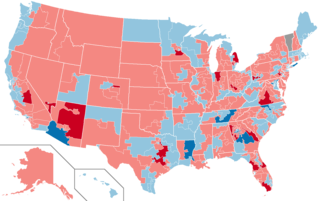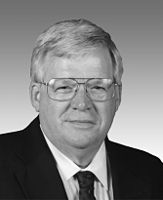United States House of Representatives elections in Illinois, 2002
|
|
||||||||||||||||||||||||||||||||||
|---|---|---|---|---|---|---|---|---|---|---|---|---|---|---|---|---|---|---|---|---|---|---|---|---|---|---|---|---|---|---|---|---|---|---|
|
||||||||||||||||||||||||||||||||||
|
All 435 seats to the United States House of Representatives 218 seats were needed for a majority |
||||||||||||||||||||||||||||||||||
|
||||||||||||||||||||||||||||||||||

Results:
Democratic hold
Democratic pickup
Republican hold
Republican pickup
Independent hold
|
||||||||||||||||||||||||||||||||||
|
||||||||||||||||||||||||||||||||||
The Elections for the United States House of Representatives on 5 November 2002 was in the middle of President George W. Bush's first term. Although it was a midterm election, the Republican Party gained a net eight seats, solidifying their majority. Together with gains made in the Senate, it was one of the few mid-term elections that the party in control of the White House increased their number of seats in the House (the other such mid-term elections were in 1934 and 1998). Notable freshmen included future Senator Chris Van Hollen, former Governor of South Dakota Bill Janklow, and future Mayor of Chicago Rahm Emanuel.
Three special elections were held apart from those on November 5. The elected winners would serve the remainder of the incumbent Congress and face re-election in November.
Key to party abbreviations: AI=American Independent, C=Constitution, D=Democratic, G=Green, I=Independent, IP=Independence Party, L=Libertarian, R=Republican
The state gained two seats in reapportionment.
The state gained one seat in reapportionment.
The state gained one seat in reapportionment.
The state lost one seat in reapportionment.
The state gained two seats in reapportionment.
The state gained two seats in reapportionment.
The state lost one seat in reapportionment.
Redistricted from the 20th
The state lost one seat in reapportionment.
The state lost one seat in reapportionment.
The state lost one seat in reapportionment.
The state lost two seats in reapportionment.
The state gained one seat in reapportionment.
...
Wikipedia


